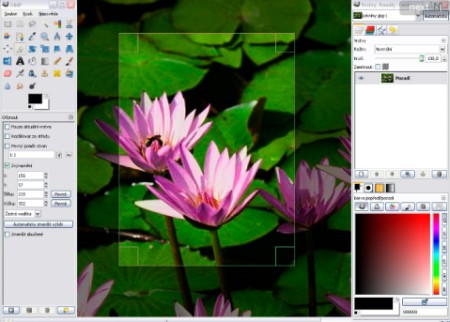Online programs help boost photo editing
 Hamburg - When Jens Kuerpick looks at photos from old, school outings, he can't help but grin. Not because he and his old buddies were just kids back then, "but because they all have red eyes in the photos," the Dusseldorf university student says.
Hamburg - When Jens Kuerpick looks at photos from old, school outings, he can't help but grin. Not because he and his old buddies were just kids back then, "but because they all have red eyes in the photos," the Dusseldorf university student says.
Those flaws can now be fixed using a computer. Yet digital photo editing is also increasingly being used for artistic aspects. Practical solutions can come through special programs on the internet.
Examples include Snipshot, Sumo Paint and Picnik: many of the programs provide the basic functions of Photoshop, but are available online free of charge and are easy to use. Users can modify the image contrast, brightness, size ratios or shadowing.
"The benefit is that the programs no longer need to be downloaded off the internet," says Constanze Clauss from the Photo Industry Association in Frankfurt. Amateur photographers can work on their photos directly on the internet.
"Technically speaking, digital photo editing on the internet functions using Flash or Java applications running in the browser," explains Jan Johannsen from netzwelt. de, a Hamburg-based internet portal. The programs available on the providers' websites can be called up there at the click of a mouse or by surfing to the appropriate page.
If users are running the application from home, then they can upload photos directly from the hard drive. They are then stored again in the My Documents folder.
"This requires an internet-ready computer with a browser capable of supporting the current version of the Flash Player," says media designer Matthias Kieltyka from Munster.
It also works away from home too: programs like Snipshot, FotoFlexer or Picnik allow users to upload images for editing directly from their locations as posted on social networks. That means that anyone with a Facebook profile or Picasa photo platform account can access the images stored there. After editing, the images can be returned to the same location or saved on other storage media.
There are a few catches: while users are provided with many functions, they are limited in their application. Snipshop cannot handle images larger than 10 megabytes, for example. "The programs are hence intended for normal users like amateur photographers with an appropriate digital camera," Johannsen says.
Programs like Sumo Paint, Picnik, Pixlr or FotoFlexer nevertheless have a lot of potential. They can touch up colours and text, as well as perform tricks like giving photos an oil painting look. Effects are popular for designing flyers and the like, says Lauri Koutaniemi from Snap, a Finnish company that offers Sumo Paint.
"Many also use the photo editor to create their own images that aren't based on a photograph at all," Koutaniemi says. Fantasy images of mystical landscapes are currently popular.
The quality of the programs varies sharply from provider to provider and don't lend themselves easily to comparison, says Constanze Clauss. The simplest solution is to test various solutions. The fee-based premium versions should be taken with a grain of salt: the learning curve is steep, meaning that amateur photographers may want to think twice before shelling out the cash. (dpa)